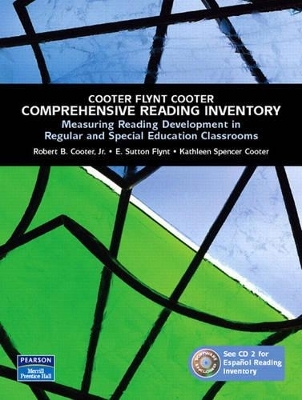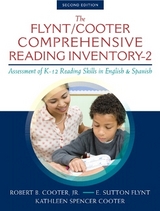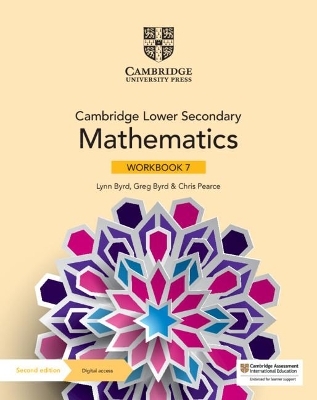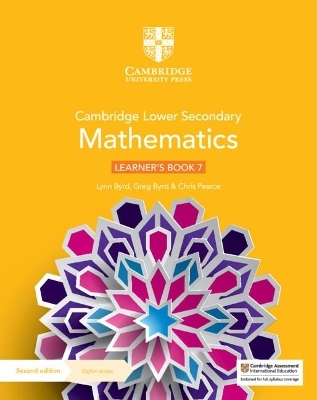
Comprehensive Reading Inventory
Pearson
978-0-13-113560-4 (ISBN)
- Titel erscheint in neuer Auflage
- Artikel merken
Derived from the Flynt/Cooter Classroom Reading Inventory, this informal classroom inventory offers teachers of preschool through Grade 12 the simple, straightforward miscue analysis method for assessing their students' level of competency in reading comprehension and fluency.In addition this text provides easily administered assessment tools for discerning students' development in phonemic awareness, phonics, and vocabulary. Additional materials are provided to help teachers to assess students' whose first language is Spanish and students who have special needs. A resource CD and an Audio case study CD are included with every copy.
FEATURES:
Three-Part Organization - Part I provides an Introduction to CRI, Administration guidelines and student summary records. Part 2 provides interest inventories, phonemic awareness, phonics, and vocabulary assessment tools. Part 3 provides readers passages with narrative and expository forms and assessment protocals.
Reliability and Validity - The CRI was found to be one of the most reliable and vaild reading tests of its kind and compares quite favorably to other similar instruments available today. A complete summary of validity and reliability findings from the CRI Validation Study can be found on teh accompanying resources CD in the back of the CRI.
English Language Learners: Meeting the Needs of Learners Whose First Language is Spanish - the CRI also includes assessment forms and protocols for working with learners whose first language is Spanish. These forms that once appeared in the Flynt/Cooter English Espanol Reading Inventory for the Classroom, have been carefully and precisely revised to ensure they are more culturally responsive and sensitive to the needs of students whose first language is Spanish.
CD - Provides an audio description of how to administer the inventory and includes an authentic case study of a student's performance. A completed sample student summary form of this child's performance appears in Part I of the CRI.
CD - Provides users with assessment resources, reliability and validity study, Spanish readers passages, and assessment protocals.
SPECIAL NEEDS ANALYSIS:
Specially prepared data sheets have been created for teachers who plan to use this inventory to assess their special needs students.
CRI Student Summary Form-SPED -- designed to meet the mandates of IDEA and is ideal for developing an IEP.
CRI Student Summary Form -Title I -- designed to prioritize instruction for the Title I reading teacher by collecting pre and post-test data.
CRI Student Summary Form-504 - designed to meet the needs of schools creating accomodation plans for identified students based on student CRI data. The form provides guidelines for reasonable accomodations and allows schools/parent committees to determine classroom modifications.
Dr. Robert B. Cooter, Jr. holds the position Distinguished Professor of Urban Literacy Research at The University of Memphis. In March of 2006, Robert Cooter and Dr. J. Helen Perkins, also of The University of Memphis, were selected by the International Reading Association to be the next editors of The Reading Teacher, the largest literacy education journal in the world. His primary research focus pertains to research-based reading instruction for children living at the poverty level. Professor Cooter founded The Memphis Literacy Academy, an outreach program in Memphis City Schools dedicated to raising the expertise and of hundreds of inner-city teachers of reading, and is also co-principal investigator for the Memphis Striving Readers Program (grades 6-9 content areas), a $16 million middle school literacy research project in Memphis City Schools funded under a major grant by the U.S. Department of Education for 2006-2011. Dr. Cooter formerly served as the first “Reading Czar” (associate superintendent) for the Dallas Independent School District (TX) and engineered the district’s highly acclaimed Dallas Reading Plan involving the training of approximately 3,000 teachers in “comprehensive literacy instruction.” In March of 1998, Cooter was recognized as a “Texas State Champion for Reading” by then-Governor George W. Bush and First Lady Laura Bush as a result of the successes of the Dallas initiative. Cooter has authored or co-authored nearly 100 journal articles and some 19 books in reading education. His books include the best-selling Teaching Children to Read: Putting the Pieces Together (Merrill/Prentice Hall), an evidence-based reading (SBRR) text currently used at over 200 universities; Strategies for Reading Assessment and Instruction: Helping Every Child Succeed (Merrill/Prentice Hall) which is at present the top text in reading assessment in the U.S., Perspectives on Rescuing Urban Literacy Education: Spies, Saboteurs, & Saints (Lawrence Erlbaum Associates), The Flynt/Cooter Reading Inventory for the Classroom (Merrill/Prentice-Hall), and The Comprehensive Reading Inventory (Merrill/Prentice Hall), a new norm-referenced reading assessment tool to be published in fall 2006. A native of Nashville, Tennessee, Bob lives in Memphis with his wife, Dr. Kathleen Spencer Cooter, a popular Special Education and school leadership professor, author, and researcher at The University of Memphis.
Contents
SectionI–Instructions for Using the Comprehensive ReadingInventory 1
Introduction to the Comprehensive Reading Inventory 2
Reading Assessment: A Comprehensive Perspective 2
Scientifically Based Reading Research and Assessment 2
The “Big Five” SBRR Assessment Areas 2
How Does the CRI Assess Each of the Big Five Areas of Reading? 5
Reliability and Validity: Technical Development of the CRI 5
Methodology 6
Results 6
Summary and Conclusion 14
Special Education, Title I, and 504 Settings 14
Special Education 15
Title I 15
Section 504 15
English Language Learners: Meeting the Needs of Bilingual and ESL Teachers 15
How to Administer and Score the CRI 16
Recommended Procedures: The CRI Assessment Process 16
Using the Instructional DVD to Get Acquainted with the CRI 16
Comprehensive Reading Inventory Assessment Tools 16
Reading Comprehension, Fluency, and Oral Reading Assessments 19
Graded Sentences for Initial Passage Selection 19
The Preprimer (PP) and Primer (P) Passages 19
Reading Passages: Narrative and Expository (Forms A—D) 21
Instructions for Administering the Form E Passages (Grades 10—12) 29
Completing the Student Summary Form 30
The Student Summary Form for Regular Classroom Settings 30
The Student Summary Form for Special Education, Title I, and Section 504 Settings 31
Instructions for Using the Español Reading Inventory Included on the CRI CD 57
First Interventions: Translating Assessment Data into Classroom Lesson Plans 57
If-Then Thinking 61
Getting Started 65
SectionII–Comprehensive ReadingInventory Assessment Tools 67
Interest Inventory 68
Reading Attitude Survey–Elementary Grades (K—5) 68
Alphabetics Assessments 75
Phonemic Awareness Tests (PAT) 75
Letter Naming Test (LNT) 95
Phonics Quick Test (PQT) 99
Vocabulary Assessments 104
References 106
SectionIII–The Comprehensive ReadingInventory (CRI) 109
Form A
Sentences for Initial Passage Selection 111
Narrative Passages 115
Level PP: The Accident 116
Level P: Let’s Go Swimming 118
Level 1: You Cannot Fly! 120
Level 2: The Pig and the Snake 123
Level 3: The Big Bad Wolf 124
Level 4: New Clothes 126
Level 5: Hot Shoes 128
Level 6: Mountain Fire 130
Level 7: The Canoe Trip 132
Level 8: The Eagle 134
Level 9: The Case of Angela Violet 136
Examiner’s Assessment Protocols 133
Level PP: The Accident 141
Level P: Let’s Go Swimming 143
Level 1: You Cannot Fly! 147
Level 2: The Pig and the Snake 151
Level 3: The Big Bad Wolf 155
Level 4: New Clothes 159
Level 5: Hot Shoes 163
Level 6: Mountain Fire 167
Level 7: The Canoe Trip 171
Level 8: The Eagle 175
Level 9: The Case of Angela Violet 179
Form B
Sentences for Initial Passage Selection 183
Narrative Passages 187
Level PP: Eyes in My Closet 188
Level P: The T-Ball Game 190
Level 1: Birthday at the Zoo 192
Level 2: Mary’s New Bike 195
Level 3: Bedtime 196
Level 4: A Different Time 198
Level 5: Afternoon Walk 200
Level 6: Laser Boy 202
Level 7: The Paper Route 204
Level 8: Riley and Leonard 206
Level 9: The Long Night 208
Examiner’s Assessment Protocols 211
Level PP: Eyes in My Closet 213
Level P: The T-Ball Game 215
Level 1: Birthday at the Zoo 219
Level 2: Mary’s New Bike 223
Level 3: Bedtime 227
Level 4: A Different Time 231
Level 5: Afternoon Walk 235
Level 6: Laser Boy 239
Level 7: The Paper Route 243
Level 8: Riley and Leonard 247
Level 9: The Long Night 251
Form C
Sentences for Initial Passage Selection 255
Expository Passages 259
Level 1: Bears 261
Level 2: The Night Sky 262
Level 3: Flying Flowers 263
Level 4: The Story of Coca-Cola 264
Level 5: Popcorn 266
Level 6: Cooking Without Fire: The Microwave Oven 267
Level 7: Diamonds 269
Level 8: The Future Is Here 270
Level 9: Visual Illusions 272
Examiner’s Assessment Protocols 273
Level 1: Bears 275
Level 2: The Night Sky 279
Level 3: Flying Flowers 283
Level 4: The Story of Coca-Cola 287
Level 5: Popcorn 291
Level 6: Cooking Without Fire: The Microwave Oven 295
Level 7: Diamonds 299
Level 8: The Future Is Here 303
Level 9: Visual Illusions 307
Form D
Sentences for Initial Passage Selection 311
Expository Passages 315
Level 1: Animal Friends 317
Level 2: Making Pictures Is Art 319
Level 3: The History of Books 320
Level 4: Mountain Man 322
Level 5: Music of Mexico 323
Level 6: Jesse Owens 325
Level 7: Nails: A Carpenter’s “Fastener” 326
Level 8: The Environments of Africa 328
Level 9: The Mathematics of Health 330
Examiner’s Assessment Protocols 333
Level 1: Animal Friends 335
Level 2: Making Pictures Is Art 339
Level 3: The History of Books 343
Level 4: Mountain Man 347
Level 5: Music of Mexico 351
Level 6: Jesse Owens 355
Level 7: Nails: A Carpenter’s “Fastener” 359
Level 8: The Environments of Africa 363
Level 9: The Mathematics of Health 367
Appendix: Student Summary Forms 333
| Erscheint lt. Verlag | 7.11.2006 |
|---|---|
| Sprache | englisch |
| Maße | 210 x 276 mm |
| Gewicht | 689 g |
| Themenwelt | Schulbuch / Wörterbuch |
| Sozialwissenschaften ► Pädagogik | |
| ISBN-10 | 0-13-113560-0 / 0131135600 |
| ISBN-13 | 978-0-13-113560-4 / 9780131135604 |
| Zustand | Neuware |
| Informationen gemäß Produktsicherheitsverordnung (GPSR) | |
| Haben Sie eine Frage zum Produkt? |
aus dem Bereich



